What can be seen in a home telescope. How to observe the planets and other celestial bodies
A telescope is an optical instrument designed to observe celestial objects. One of the main characteristics of a telescope is the diameter of the lens. The larger the diameter of the telescope lens, the brighter the image will be and the higher the magnification can be used for observations.
Let's take two telescopes, in which the lens size differs by 2 times (for example, 100mm and 200mm), and then look at the same celestial object with the same magnification. We will see that the image in a 200mm telescope will be 4 times brighter than in a 100mm telescope, since its mirror is larger in area and collects more light. As an analogy, we can cite two conical funnels with different diameters that stand in the rain, respectively, the one that is larger will collect more water. For comparison, a 70mm telescope lens collects 100 times more light than the human eye, and a 300mm telescope lens collects 1800 times more light.
Also, the resolution of the telescope depends on the diameter of the lens. A high-resolution telescope allows you to see small parts, for example, when observing and shooting planets or binary stars.
What celestial objects can be seen with a telescope?
1) Moon. Already in a small 60…70mm telescope one can see a lot of craters and seas on the Moon, as well as mountain ranges.
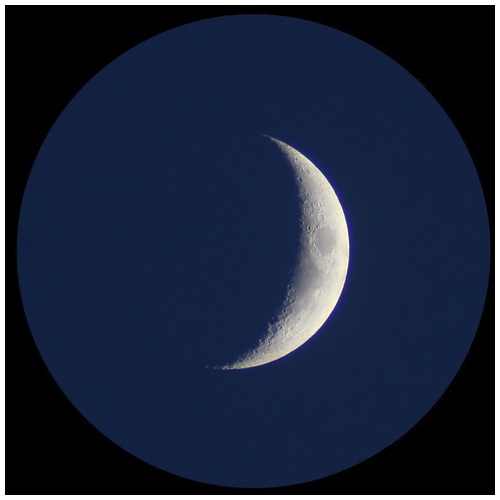
View of the Moon through a 50x telescope.
Near the full moon around large craters light rays can be seen. The size of the smallest craters available with a 60-70mm telescope is about 8 kilometers, while a 200mm telescope will allow you to see craters about 2 km in size due to its high resolution.
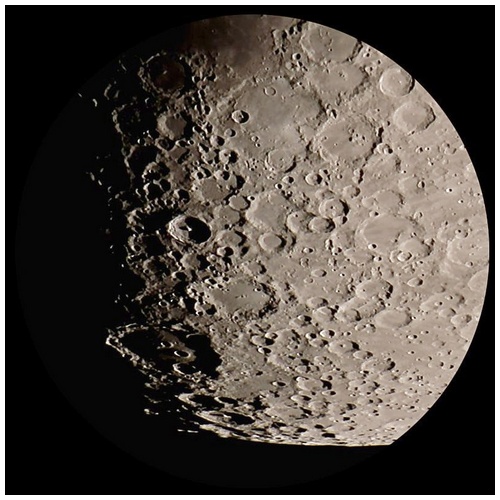
View of the Moon through a 200x telescope.
2) planets. For planetary observations, it is desirable to use telescopes with a sufficiently large lens diameter - from 150mm, since their angular size is quite small, and to a person who looks even through a 150mm telescope for the first time, Jupiter may seem like a small point. However, even in modest instruments with a diameter of up to 114 mm, you can see quite a lot - the phases of Mercury and Venus, the polar cap of Mars during the Great Oppositions, the ring of Saturn and its satellite Titan, the cloud belts of Jupiter and its 4 satellites, as well as the famous Great Red Spot. Uranus and Neptune will look like dots. In larger telescopes (from 150 mm), the number of details visible on the planets will noticeably increase - these are numerous details in the cloud belts of Jupiter, and the Cassini gap in the ring of Saturn, and dust storms on Mars. The appearance of Uranus and Neptune will not change much, but they will no longer be visible just as dots, but as tiny greenish balls. The main thing in planetary observations is patience and choosing the right magnification.
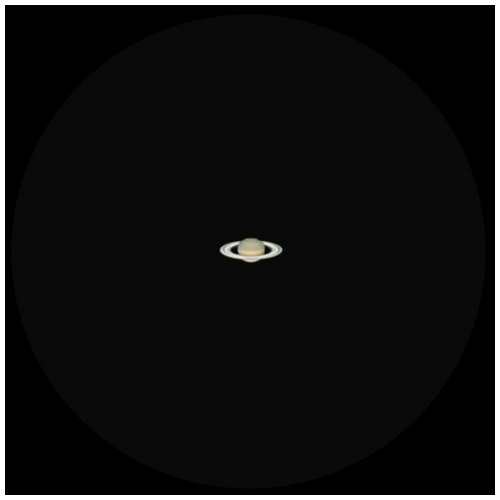
Saturn. Approximate view in telescopes with a diameter of 90mm
3) double stars. In a telescope, they are visible as several nearby stars, either of the same color or different colors (for example, orange and blue, white and red) - a very beautiful sight. Observing closely spaced binary stars is an excellent test of telescope resolution. It should be noted that all stars, except the Sun, are visible through a telescope as points, even the brightest or closest. This is due to the fact that the stars are at a gigantic distance from us, so it was possible to fix the disks of stars only in the largest telescopes on Earth.

Double star Albireo - Beta Cygni. Approximate view in telescopes with a diameter of 130mm
4) Sun. On the star closest to us, even in small telescopes, sunspots can be seen - these are areas with a lower temperature and strong magnetization. In telescopes with a diameter of 80 mm or more, the structure of spots is visible, as well as granulation and flare fields. It should be said right away that observing the Sun through a telescope without special protection (without an aperture solar filter) is FORBIDDEN - you can lose your eyesight once and for all. During observations, it is necessary to fix the filter as securely as possible so that an accidental gust of wind or an awkward movement of the hand cannot disconnect it from the telescope tube. You should also remove the finder or cover it with covers.
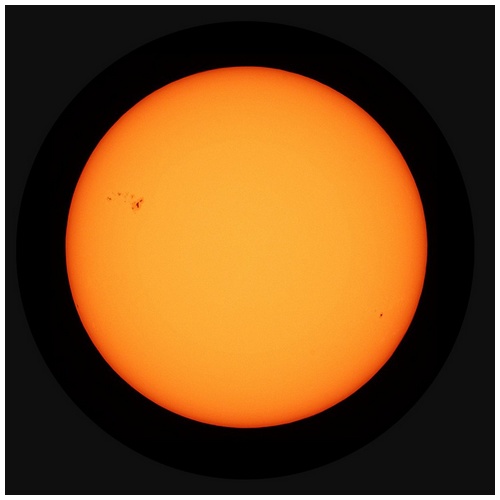
Sun when viewed with an aperture filter. Magnification - about 80 times
5) star clusters. These are gravitationally bound groups of stars that have a common origin and move as a whole in the gravitational field of the galaxy. Historically, star clusters are divided into two types - open and globular. The largest open clusters available for observation even with the naked eye - for example, the Pleiades. Without a telescope in the Pleiades, you can see 6-7 stars, while even a small telescope will allow you to see about fifty stars in the Pleiades. The remaining open clusters are visible as groups of stars, from a few tens to hundreds.

Double star cluster h and x Perseus. Approximate view in telescopes with a diameter of 75 ... 90mm
globular clusters in telescopes up to 100 mm in diameter, they are visible as hazy round spots, however, starting from 150 mm in diameter, the brightest globular clusters begin to crumble into stars - first from the edges, and then to the very center. For example, the globular cluster M13 in the constellation Hercules, when viewed through a 200mm telescope, completely crumbles into stars. In a 300mm telescope at the same magnification, it looks even brighter (about 2.3 times) - it's just an unforgettable sight when 300,000 stars sparkle in the eyepiece!

Globular cluster M13 in Hercules. Approximate view through a telescope with a diameter of 250 ... 300mm
6) galaxies. These distant stellar islands are also available for observation in 60…70mm telescopes, but in the form of tiny specks. Galaxies are demanding on the quality of the sky - they are best observed away from the city in a dark sky. Details in the structure of galaxies (spiral arms, dust clouds) become available in telescopes with a diameter of 200 mm or more - the larger the diameter, the better. However, you can study the location of bright galaxies with a small telescope.

Galaxies M81 and M82 in the constellation Ursa Major. Approximate view through a telescope with a diameter of 100-150mm
7) Nebulae are giant accumulations of gas and dust illuminated by nearby stars. The brightest nebulae, such as the Great Orion Nebula (M42) or the nebula complex in the constellation Sagittarius, are already visible with 35mm binoculars. However, only a telescope can convey the beauty of nebulae. The situation is the same as with galaxies - the larger the diameter of the lens, the brighter the nebulae are visible.

The Orion Nebula. Approximate view through telescopes with a diameter of 60-80mm.
It should be noted that both galaxies and nebulae look gray in a telescope, since these are very faint objects and their brightness is not enough for color perception. The only exceptions are the brightest nebulae - for example, in telescopes with a diameter of 200 mm or more near the Great Orion Nebula, hints of color begin to appear in the brightest areas. However, the view of nebulae and galaxies through the eyepiece is a breathtaking sight.
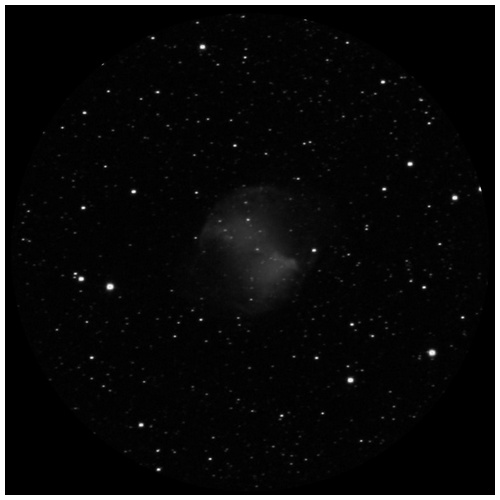
An approximate view of the planetary nebula M27 "Dumbbell" in the constellation Vulpecula in a dark sky through a 250-300mm telescope.
8) Comets– during the year you can see several “tailed travelers”. They look like misty specks in a telescope, and the tail of the brightest comets can be seen. It is especially interesting to observe the comet several nights in a row - you can see how it shifts among the surrounding stars.

An approximate view of a bright comet through a telescope with a diameter of 130-150mm
9) Ground facilities. The telescope can be used as a telescope (for example, to view birds or the surrounding area), but be aware that not all telescopes provide a direct image.
Summarize.
The main parameter of any telescope is the diameter of the lens. However, no matter what telescope you choose, there will always be interesting objects to observe. The main thing is to have a craving for observations and a love for astronomy!
Font size:
“The abyss of stars has opened up full,
There is no number of stars, the abyss of the bottom.
M.V. Lomonosov
The universe seems to us something distant and incomprehensible. She beckons us with her beauty, fascinates us with her secrets. I would like to plunge into this atmosphere of mystery, and opening the veil of secrets - to look into the eyes of infinity. A telescope will become a guide to the world of shining stars and distant planets. You can pick it up. Let's see what we can see in an amateur telescope with an aperture of up to 150 mm.
Moon. Where without her? The only satellite of the Earth and the brightest object in the night sky. Armed with a telescope, we will see craters, mountain ranges, furrows, domes, lunar seas. It is recommended to observe the moon in the first and last quarter of the lunar phase, during these periods the satellite can be examined in more detail.
Sun. The brightest star. The most convenient time for observation is the morning hours. With a telescope, you can clearly see sunspots and, of course, the famous astronomical phenomenon - solar eclipse. But don't forget to use sun filters or you could damage your eyes. Astronomers have a joke: “How many times can you look through a telescope at the sun? Answer: twice - first with the right, then with the left eye.

Planets of the solar system. Of course, the planets in the lens of an amateur telescope do not look the same as in photographs from the Hubble Orbital Telescope. However, their study is also very exciting and informative. The most interesting planets to study are Venus, Mars, Saturn and Jupiter.
It is best to observe Venus either in the morning or in the evening. Due to the dense atmosphere around the planet, its details are very difficult to see, but the phases of Venus can be clearly seen with a telescope.
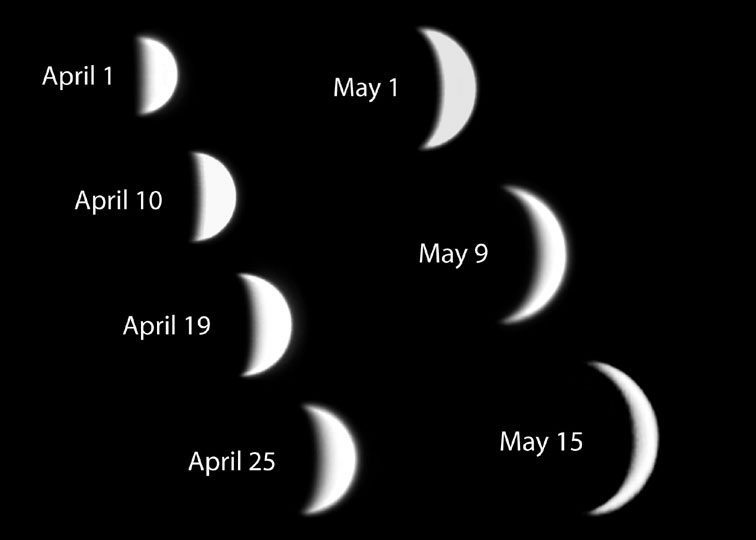
Observation during the great opposition of Mars will give the most complete picture of this planet. The Great Opposition is the moment of the closest approach of Mars to the Earth. During this period, you can see polar caps at the poles, seas, clouds.
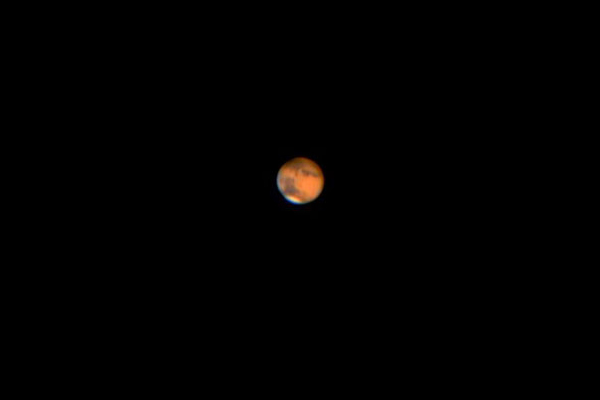
Even with a low magnification telescope, you can see the rings of Saturn! And having a telescope with a lens diameter of 100 mm. You can see the cloud belts of the planet.
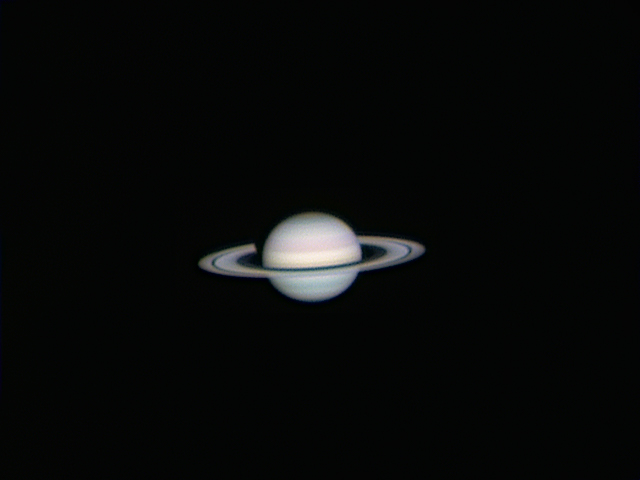
Jupiter is the most visible planet of all objects solar system. You can consider in detail the satellites of the planet: Io, Europa, Ganymede, Callisto. Also, with a telescope with an aperture of more than 100 mm, you can see cloud belts and a large red spot.

Star clusters, nebulae and galaxies. To view these objects of the Universe, a more powerful telescope is required. In amateur telescopes that have a low magnification, when looking at these objects, you will see only small dots or white spots. But that won't stop you, will it?

Levehuk Skyline PRO 2000 EQ
The Orion Nebula. A very bright and impressive object. With the naked eye, the nebula is perceived as an indistinct glow, with binoculars it is visible as a bright cloud. And by the way, the size of this “cloud” is such that its substance would be enough for about a thousand Suns, or more than three hundred million Earth planets.

The photo was taken with the Levehuk Skyline PRO 1000 EQ telescope.
The Pleiades star cluster. Located in the constellation Taurus. There are about 1000 stars in the Pleiades, but of course, not all of them are visible from the Earth. The blue halo around the stars is the nebula in which the star cluster is submerged. The nebula is visible only around the most bright stars Pleiades.
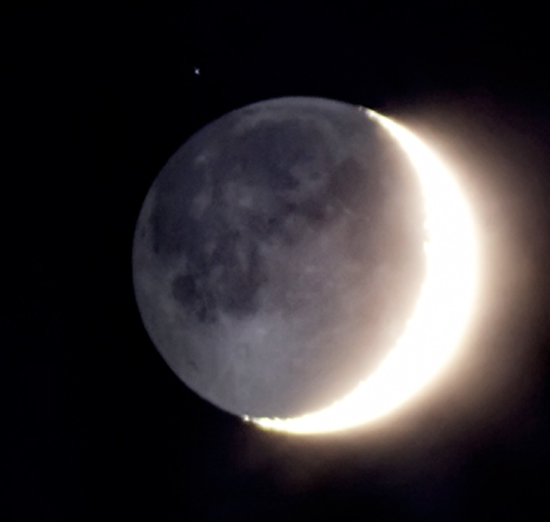
The photo was taken with the Levehuk Skyline PRO 1000 EQ telescope.
Moon. With the naked eye, we would see only a luminous crescent. Dark spots are lunar seas, light areas are hills. It is the seas and hills that form the "smiling face" on the full moon.

The photo was taken with the Levehuk Skyline PRO 2000 EQ telescope.
Lunar surface. The craters are clearly visible. The Soviet moon rover and the American flag are not visible. To see them, you need a giant telescope with a mirror hundreds of meters in diameter - this is not yet on Earth.
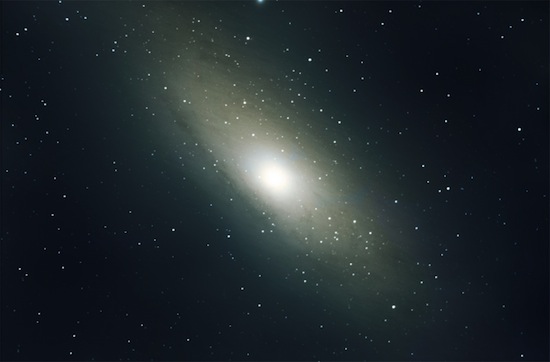
The photo was taken through the BRESSER Messier NT-203 telescope.
The Andromeda Galaxy (or Nebula) is one of the closest galaxies to us. Close is a relative term: it is about 2.52 million light-years. Due to the distance, we see this galaxy as it was 2.5 million years ago. There were no people on Earth then. What the Andromeda Galaxy looks like right now is impossible to know.
And finally…

The photo was taken with the Levehuk Skyline PRO 1000 EQ telescope.
Learned? Yes it Jupiter! And it can also be seen with a telescope. Like Venus, Saturn, Uranus and Neptune, and many other space objects.
Watch for starry sky best outside the city, where there are no lights and lights. Although in the city you can see a lot of interesting things. Any telescope will do for a start, and then you can switch to professional models. Beginners should not buy a telescope on their own, it is better to consult with experienced astronomers. You can catch and question them in the Days of Open Astronomy (DOA), which take place in many cities of Russia (DOA schedule -). Fans of their craft gather at these events, who can tell everything and even more about astronomy, and allow you to look through a telescope for free.
Liked the post? Support Factrum, click:
Actually, this is one of the first questions that most beginner astronomy lovers have.
Some people think that through a telescope you can see the American flag, planets the size of a soccer ball, colored nebulae, as in photographs from Hubble, etc. If you also think so, then I will immediately disappoint you - the flag is not visible, pea-sized planets, galaxies and nebulae are gray colorless spots. The fact is that a telescope is not just a tube for entertainment and getting “happiness in the brain”. This is a fairly complex optical device, with the correct and thoughtful use of which you will get a lot of pleasant emotions and impressions from viewing space objects.
One of the most important parameters of a telescope is the diameter of the objective (lens or mirror). As a rule, beginners buy inexpensive telescopes with a diameter of 70 to 130 mm - so to speak, to get to know the sky. Of course, the larger the diameter of the telescope lens, the brighter the image will be at the same magnification. For example, if we compare telescopes with a diameter of 100 and 200 mm, then at the same magnification (100x), the brightness of the image will differ by 4 times. The difference is especially noticeable when observing faint objects - galaxies, nebulae, star clusters. Nevertheless, it is not uncommon for beginners to immediately purchase a large telescope (250-300 mm), then marvel at its weight and size. Remember: the best telescope is the one that is used most often!
So what can you see with a telescope? First, the moon. Our space companion is of great interest for both beginners and advanced amateurs. Even a small telescope with a diameter of 60-70 mm will show lunar craters and seas. At a magnification of more than 100x, the moon will not fit into the field of view of the eyepiece at all, that is, only a piece will be visible. As the phases change, the appearance of the lunar landscapes will also change. If you look through a telescope at a young or old moon (narrow crescent), you can see the so-called ash light - a faint glow dark side of the moon, caused by the reflection of earth's light from the lunar surface.

You can also see all the planets in the solar system with a telescope. Mercury in small telescopes will look just like a star, and in telescopes with a diameter of 100 mm or more, you can see the phase of the planet - a tiny sickle. Alas, you can catch Mercury only in certain time- the planet is not far away from the Sun, which makes it difficult to observe it
Venus - also known as the morning evening star - is the brightest object in the sky (after the sun and moon). The brightness of Venus is so high that it can be seen with the naked eye during the day (you just need to know where to look). Even with small telescopes, you can see the phase of the planet - it changes from a tiny circle to a large crescent, similar to the moon. By the way, sometimes people, when looking at Venus through a telescope for the first time, think that they are being shown the moon???? Venus has a dense opaque atmosphere, so you won't be able to see any details - just a white crescent.
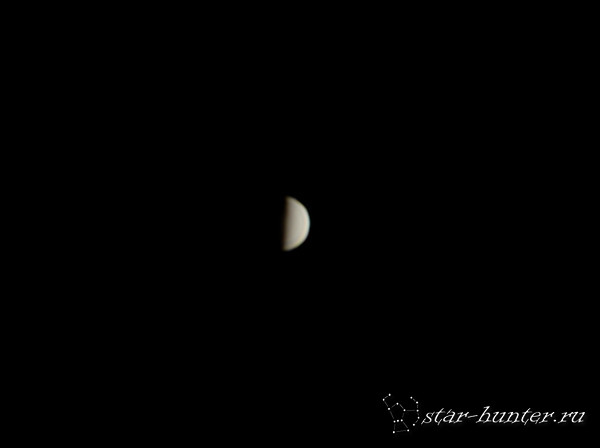
Earth. Oddly enough, the telescope can also be used for terrestrial observations. Quite often, people buy a telescope both as a space peeper and a spyglass. Not all types of telescopes are suitable for ground-based observations, namely lens and mirror-lens ones - they can provide a direct image, while in Newton's system mirror telescopes the image is inverted.
Mars. yes, yes, the one that is visible every year on August 27 as two moons ???? And people from year to year are being led to this stupid joke, slamming questions of familiar astronomers???? Well, Mars, even in fairly large telescopes, is visible only as a small circle, and even then only during oppositions (once every 2 years). However, in 80-90 mm telescopes it is quite possible to see the darkening on the planet's disk and the polar cap.
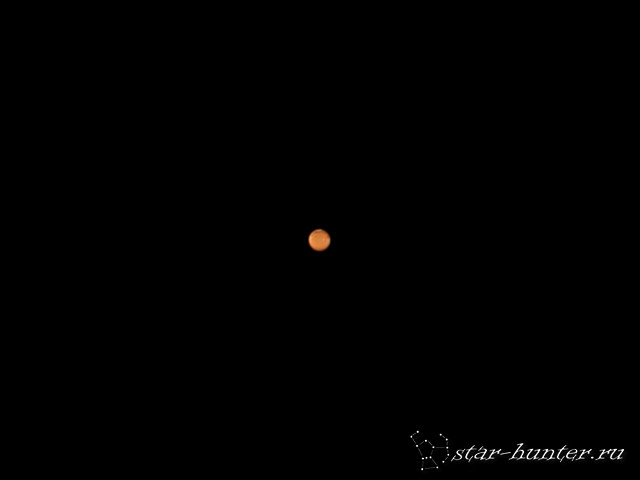
Jupiter with moons - approximate view through a small telescope.
Jupiter - perhaps it was from this planet that the era of telescopic observations began. Looking through a simple homemade telescope at Jupiter, Galileo Galilei discovered 4 satellites (Io, Europa, Ganymede and Callisto). This later played an important role in the development heliocentric system peace. In small telescopes, you can also see several bands on the disk of Jupiter - these are cloud belts. The famous Great Red Spot is quite accessible for observation in telescopes with a diameter of 80-90 mm. Sometimes satellites pass in front of the planet's disk, casting their shadows on it. It can also be seen with a telescope.
Uranus and Neptune - planets circling far from the rest of the planets, small telescopes look only in the form of stars. Larger telescopes will show tiny bluish-greenish disks without any detail.

Galaxies. These star islands can be found not only through a telescope, but also through binoculars. It is to find, not to consider. In a telescope, they look like small colorless specks. Starting with a diameter of 90-100 mm, bright galaxies can be seen form. The exception is the Andromeda Nebula, its shape can be easily seen even with binoculars. Of course, there can be no talk of any spiral arms up to a diameter of 200-250 mm, and even then they are noticeable only in a few galaxies.
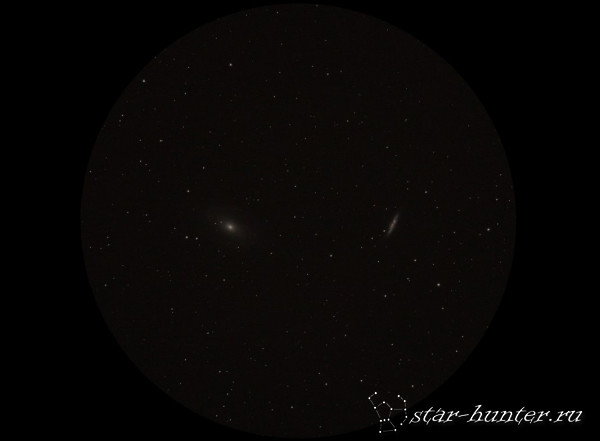
Nebulae. They are clouds of interstellar gas and/or dust illuminated by other stars or stellar remnants. Like galaxies, in a small telescope they are visible as faint spots, but in larger telescopes (from 100-150 mm) you can see the shape and structure of most bright nebulae. One of the brightest nebulae - M42 in the constellation Orion - can be seen even with the naked eye, and the telescope will show a complex gas structure, similar to clouds of smoke. Some compact, bright nebulae can be seen in color, such as NGC 6210 the Turtle Nebula, which is visible as a small bluish disk.
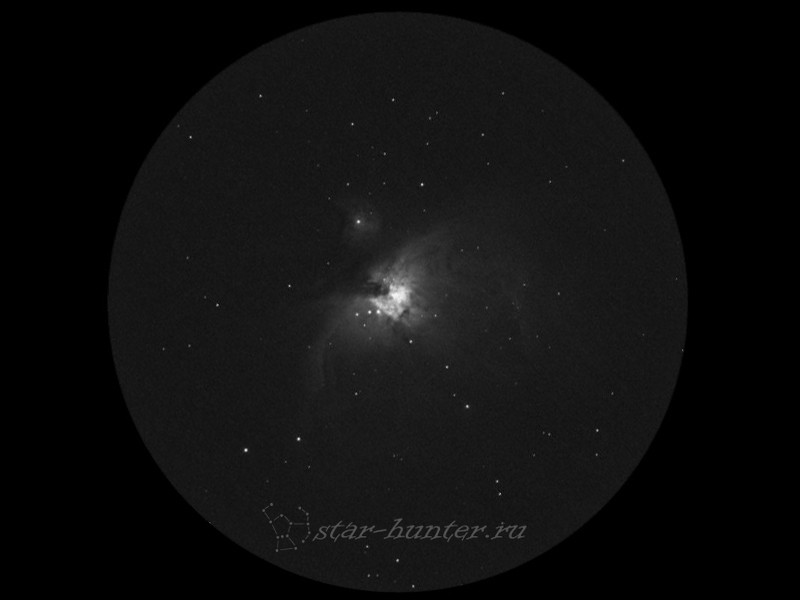
I warn you right away - observing the Sun without special protective equipment is very dangerous! Only with a special aperture filter, which must be securely attached to the front of the telescope. No toning films, smoked windows and floppy disks! Take care of your eyes! If all precautions are observed - even in a tiny 50-60 mm telescope you can see sunspots - dark formations on the sun's disk. These are the places that come out magnetic lines. Our Sun rotates with a period of about 25 days, so by observing sunspots every day, you can see the rotation of the Sun.

Having a lot of experience with nighttime observations with an amateur-level telescope, I want to shed some light on what you actually see in a telescope priced under 100,000 rubles, which can be transported by car (i.e. not stationary).
Many, having seen enough photographs taken from telescopes, and even if from the Hubble telescope, tend to buy a telescope as soon as possible, and then they are simply shocked by what they see there.
The reality is that our eye is not able to receive enough light to make the image in the telescope become color and detailed (and in conditions of lack of light we see a poorly detailed black and white image), but the camera matrix can!
Most of what you will see in an ordinary telescope will not be colored and incomprehensible, but for you to understand, I will give a few examples!

Pictured is the Crescent Nebula (NGC 6888 or Crescent Nebula). On the left is a photo, and on the right is how you can see this object in such a telescope: 
And you need to understand that it is quite heavy and the price will be from 50,000 rubles.
We go further. Small galaxies in the constellation Virgo (M86 and M84). 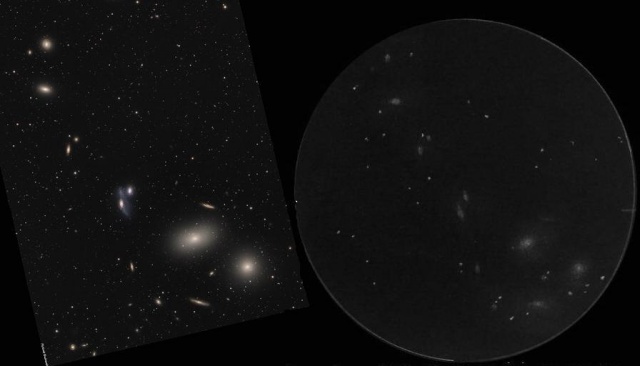
On the right is what is visible in that previous large telescope.
Large galaxy M33 in the constellation Triangulum. 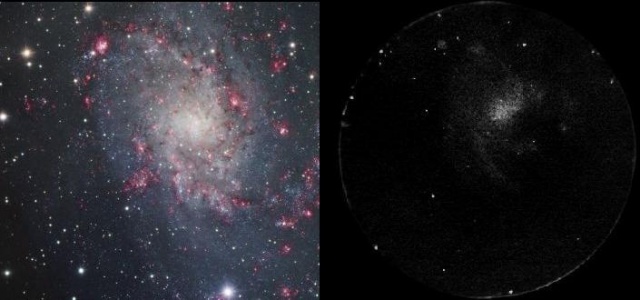
Pleiades. In a telescope, they are visible as a cluster of bright stars, and a dust cloud is clearly visible in the photo. 
And this is a globular cluster in the constellation Sagittarius (M22). The photo is on the left, and on the right is what you will see. 
Still, a small classification of what, in principle, can be seen in telescopes of different sizes.
What can we see with telescopes of different diameters:
Refractor 60-70 mm, reflector 70-80 mm.
Double stars with a separation of more than 2” - Albireo, Mizar, etc…Weak stars up to 11.5m.
Sunspots (only with aperture filter).
Phases of Venus.
There are craters on the Moon with a diameter of 8 km.
Polar caps and seas on Mars during the Great Opposition.
Belts on Jupiter and in ideal conditions the Great Red Spot (GRS), the four moons of Jupiter.
The rings of Saturn, the Cassini gap under excellent visibility conditions, the pink belt on the disk of Saturn.
Uranus and Neptune in the form of stars.
Large globular (eg M13) and open clusters.
Almost all objects of the Messier catalog without details in them.
Refractor 80-90 mm, reflector 100-120 mm, catadioptric 90-125 mm.
Double stars with a separation of 1.5" or more, faint stars up to 12 magnitude.Sunspot structure, granulation and plume fields (only with aperture filter).
Phases of Mercury.
Lunar Craters are about 5 km in size.
Polar caps and seas on Mars during oppositions.
Several additional belts on Jupiter and the BKP. Shadows from the satellites of Jupiter on the disk of the planet.
Cassini gap in the rings of Saturn and 4-5 satellites.
Uranus and Neptune as small discs with no details on them.
Dozens of globular clusters, bright globular clusters will disintegrate into stardust at the edges.
Dozens of planetary and diffuse nebulae and all objects in the Messier catalog.
The brightest objects from the NGC catalog (the brightest and largest objects show some detail, but most galaxies remain hazy patches without detail).
Refractor 100-130 mm, reflector or catadioptric 130-150 mm.
Double stars with a separation of 1" or more, faint stars up to 13 magnitude.Details of Lunar mountains and craters 3-4 km in size.
You can try to see spots in the clouds on Venus with a blue filter.
Numerous details on Mars during oppositions.
Details in the belts of Jupiter.
Cloud belts on Saturn.
Lots of faint asteroids and comets.
Hundreds of star clusters, nebulae and galaxies (in the brightest galaxies you can see traces of a spiral structure (M33, M51)).
A large number of objects in the NGC catalog (many objects have interesting details).
Refractor 150-180 mm, reflector or catadioptric 175-200 mm.
Binary stars with a separation of less than 1", faint stars up to 14 magnitude.Lunar formations 2 km in size.
Clouds and dust storms on Mars.
6-7 satellites of Saturn, you can try to see the disk of Titan.
Spokes in the rings of Saturn at their maximum opening.
Galilean satellites in the form of small disks.
The detail of the image with such apertures is already determined not by the capabilities of the optics, but by the state of the atmosphere.
Some globular clusters are resolved into stars almost to the very center.
Details of the structure of many nebulae and galaxies are visible when viewed from urban illumination.
Refractor 200 mm or more, reflector or catadioptric 250 mm or more.
Double stars with a separation of up to 0.5" under ideal conditions, stars up to 15 magnitude and fainter.Lunar formations less than 1.5 km in size.
Small clouds and small structures on Mars, in rare cases - Phobos and Deimos.
A large number of details in the atmosphere of Jupiter.
Encke division in the rings of Saturn, the disk of Titan.
Neptune's moon Triton.
Pluto is a faint star.
The maximum detail of images is determined by the state of the atmosphere.
Thousands of galaxies, star clusters and nebulae.
Nearly every object in the NGC catalog, many of which show details not seen in smaller telescopes.
The brightest nebulae have subtle colors.
But this should by no means alienate you from astronomy. Later I will explain why it is still worth buying a telescope.






